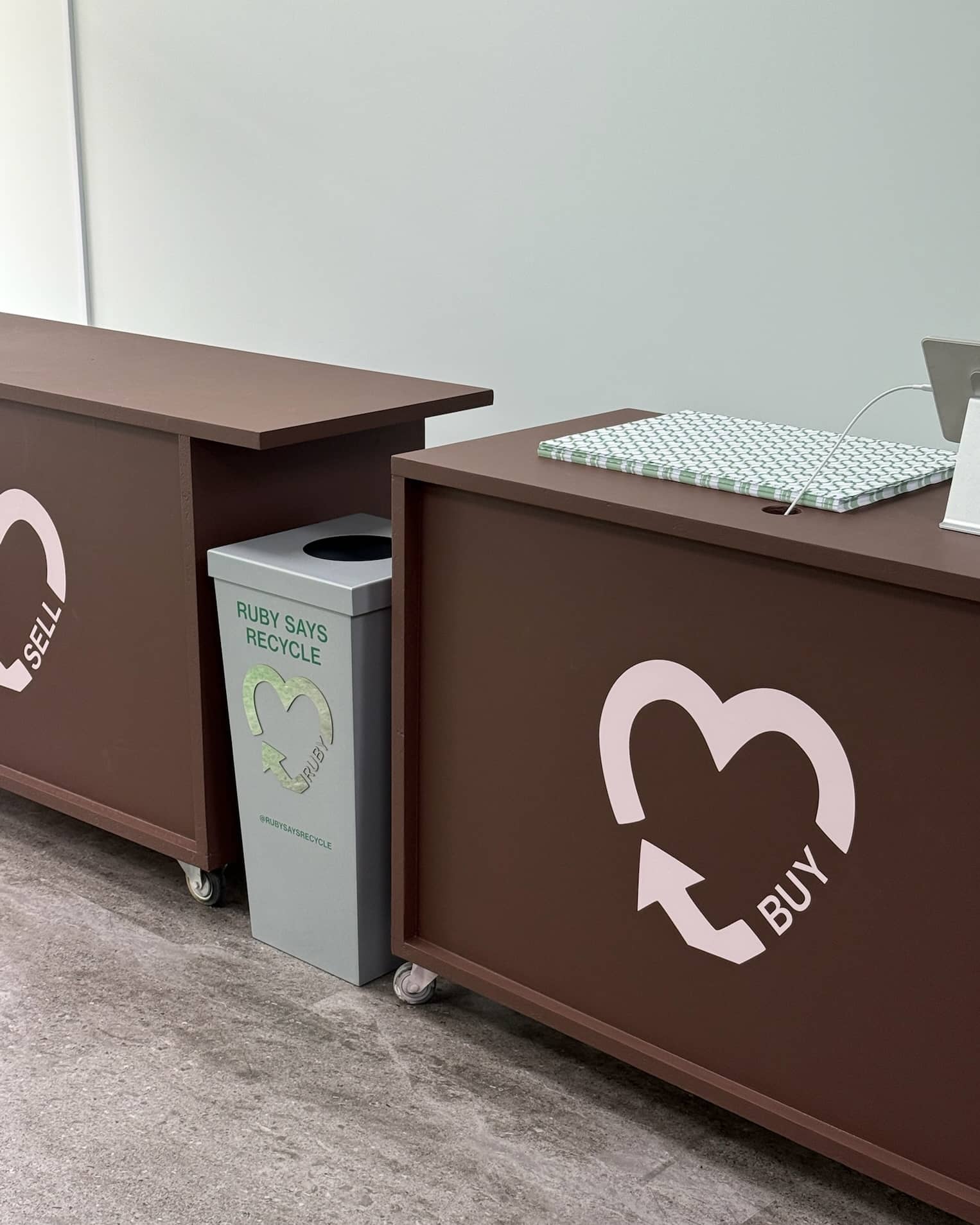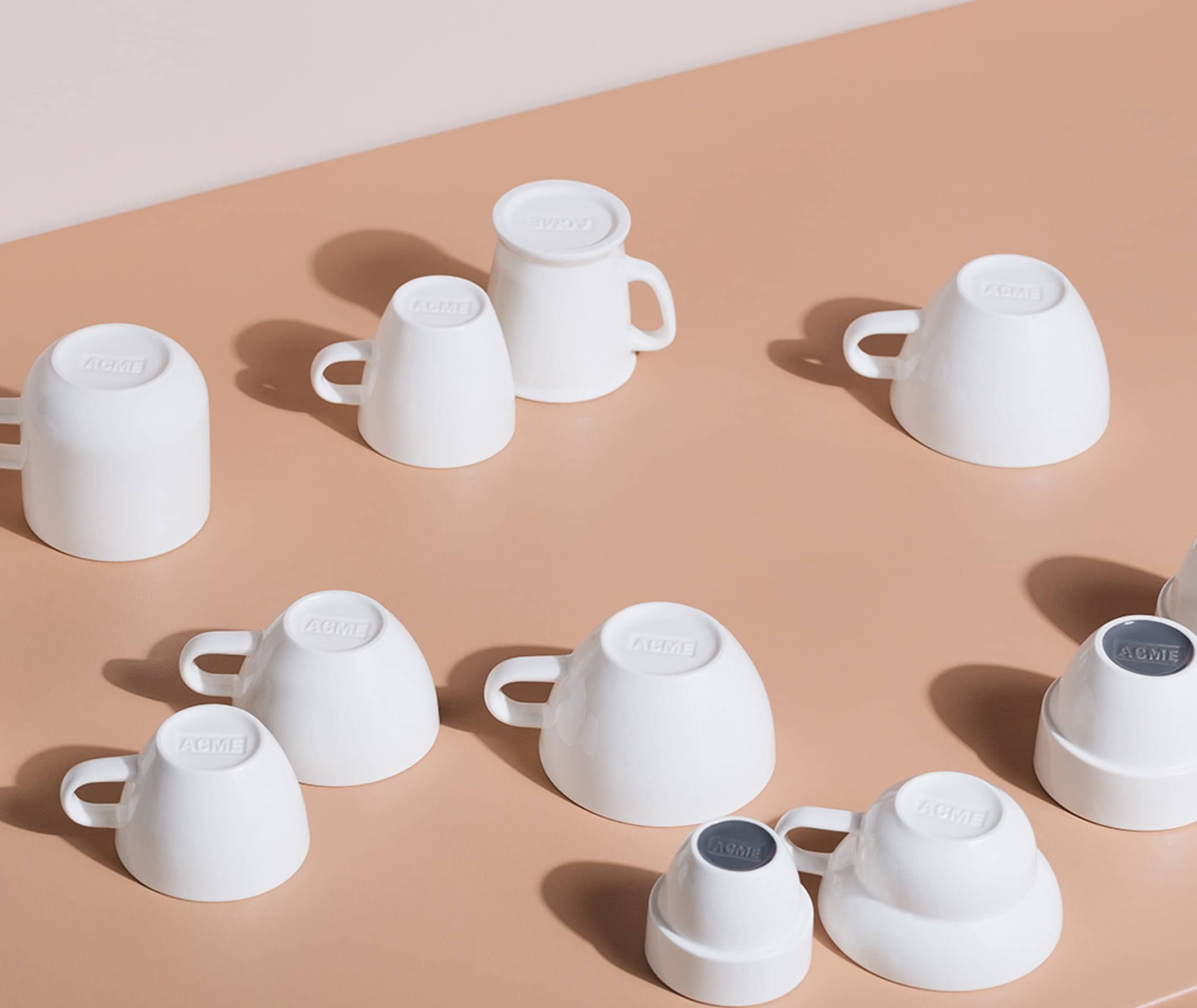
- Conversion Rate: Measures how many visitors make a purchase. Aim for 3.5% or higher in NZ.
- Inventory Turnover Ratio: Tracks how often you sell and restock inventory. A ratio of 3–6 is typical for fashion.
- Gross Margin Return on Investment (GMROI): Shows profit generated from inventory. A GMROI of NZ$3.20 is strong.
- Sell-Through Rate (STR): Indicates the percentage of inventory sold. A good STR is 80% or higher.
- Average Order Value (AOV): Average spend per transaction. NZ$160 is a solid benchmark in the APAC region.
- Cart Abandonment Rate: Tracks how often shoppers leave without purchasing. The global average is 69.8%.
- Customer Lifetime Value (CLV): Total revenue from a customer over time. Improving retention by 5% can boost profits by up to 95%.
- Product Return Rate: Percentage of returned items. Global e-commerce return rates average 20–30%.
- Days of Inventory On Hand (DOH): How long inventory lasts. Aim for 30–60 days.
- Digital Shelf Performance: Measures product visibility online. High-quality images and keyword optimisation are key.
Quick Overview:
| KPI | Good Performance | NZ Insights |
|---|---|---|
| Conversion Rate | 3.5%+ | Desktop users convert more than mobile users. |
| Inventory Turnover Ratio | 3–6 (fashion) | Seasonal stock management is crucial. |
| GMROI | NZ$3.20+ | Varies by industry (e.g., cosmetics: NZ$2.68). |
| Sell-Through Rate (STR) | 80%+ | Monitor product-level performance. |
| Average Order Value (AOV) | NZ$160+ | Free shipping thresholds can increase AOV. |
| Cart Abandonment Rate | <69.8% | Mobile abandonment rates are higher. |
| Customer Lifetime Value | NZ$168+ | Retention drives profitability. |
| Product Return Rate | <20% | Free returns improve loyalty. |
| Days of Inventory On Hand | 30–60 days | Avoid overstocking to free up cash flow. |
| Digital Shelf Performance | High visibility | Optimise product titles, images, and keywords. |
Tracking these KPIs will help you make data-driven decisions to improve sales, manage inventory, and enhance customer satisfaction. Use tools like Shopify Analytics or Almond Labs' Roadmap for easier monitoring.
KPIs and Metrics for eCommerce | Evaluate Your eComm Performance
1. Conversion Rate
The conversion rate measures the percentage of visitors who complete a purchase on your site. To calculate it, divide the number of conversions by the total number of website visits, then multiply by 100 to express it as a percentage [6]. This metric is a cornerstone of e-commerce success because it shows how well your store turns casual browsers into paying customers.
For Shopify stores in New Zealand, understanding benchmarks can provide valuable context. Globally, the average Shopify conversion rate sits around 1.3%, while most online stores achieve rates between 2.5% and 3% [5]. Locally, New Zealand's e-commerce conversion rate reached 3.5% in 2024 [4]. Stores with a conversion rate above 3.2% are typically in the top 20%, and those exceeding 4.8% rank among the top 10% [5].
Roberta Johnston from Blackpepper highlights the importance of this metric:
"When you're running an e-commerce store, conversion rate is everything. It's the difference between someone just browsing your website and actually making a purchase." [2]
To track your conversion rate, tools like Shopify Analytics, Google Analytics, or Improvely (starting at NZ$29 per month) can provide detailed insights [6].
Conversion rates can vary by traffic source. Organic search often converts at 2–4%, email campaigns perform even better at 3–5%, while social media lags behind at 0.71–1.5%. Desktop users tend to convert at higher rates (2.5–3.5%) compared to mobile users (1.2–1.8%) [2].
Improving your conversion rate often comes down to refining the customer experience. For instance, even a one-second delay in page load time can slash conversions by 7%. Similarly, mobile-optimised sites are 67% more likely to turn visitors into buyers [7]. Enhancements like adding videos to product pages (which can boost sales by up to 144%) or showcasing customer reviews (increasing purchase likelihood by 270%) can make a big difference. Even small tweaks, like reducing checkout form fields from four to three, can increase conversions by nearly 50% [7].
Michael Keenan from Shopify underscores the importance of this metric:
"Your conversion rate should reflect an action that has a measurable impact on your business growth." [3]
For Kiwi Shopify stores, prioritising conversion rate optimisation ensures that you get the most out of your existing traffic. By leveraging analytics tools and platforms like Almond Labs' Roadmap, you can uncover actionable insights to boost performance.
Next, we’ll dive into another key metric: Inventory Turnover Ratio.
2. Inventory Turnover Ratio
The inventory turnover ratio shows how effectively your store sells and restocks its inventory [13]. Essentially, it measures how quickly products move from your shelves into customers' hands, offering insights into product demand [8].
To calculate it, divide your cost of goods sold (COGS) by your average inventory value [9]. For instance, if your COGS is NZ$500,000 and your average inventory is NZ$100,000, your ratio would be 5. This means you cycle through your inventory five times a year.
Take Walmart as an example: in 2024, they reported a COGS of $490 billion and an ending inventory of $54.9 billion. That gave them an inventory turnover ratio of 8.8 [9].
For Shopify stores in New Zealand, benchmarks provide a useful comparison. On average, general retail businesses achieve a ratio of 10.86, meaning they restock their entire inventory more than 10 times annually [11]. However, this varies by industry:
- Fashion and apparel: Ratios typically range from 3 to 6 [12].
- Home goods or specialty stores: Averages fall between 1 and 3 [12].
- Fast-moving consumer goods (FMCG): Often exceed 10 [12].
For Kiwi retailers, this metric is particularly important for seasonal stock management and aligning with local market trends.
A higher inventory turnover ratio has its perks. It improves cash flow, reduces the risk of stock becoming outdated, and lowers storage costs [14][15]. This is especially valuable in New Zealand, where commercial property costs are rising in major cities. For those selling seasonal items or fashion, the ability to move stock quickly is critical to avoid markdowns or losses.
"Inventory turnover is an indication of how frequently a company sells its physical products. The turnover rate tells the business if its products sell quickly or slowly. That information, in turn, helps the company make business decisions." – Shopify Staff [8]
To improve your turnover ratio, consider strategies like adjusting pricing, enhancing marketing efforts, phasing out slow-moving stock, or encouraging preorders [10]. Shopify store owners can also utilise the "Percent of inventory sold report" in Shopify admin to track starting and ending quantities and the percentage of stock sold [11].
That said, watch out for overly high turnover ratios. While they may seem positive, they can signal insufficient inventory, leading to missed sales opportunities [8]. The key is finding the right balance - keeping customers happy with available products while maximising profitability.
For a practical solution, consider using Almond Labs' Roadmap. It can help you run promotions to clear slow-moving inventory while maintaining stock levels for your bestsellers.
Coming up: Gross Margin Return on Investment (GMROI) to identify your top-performing products.
3. Gross Margin Return on Investment (GMROI)
Gross Margin Return on Investment (GMROI) measures how effectively your inventory investments generate profit. For Shopify store owners in New Zealand, where 70%–80% of assets are tied up in stock [16], this metric offers a clear picture of how well your inventory is working for you.
Take Sarah's Family Clothing as an example: with NZ$400,000 in revenue, NZ$75,000 in COGS (Cost of Goods Sold), and an annual inventory cost of NZ$1,561,520, the average inventory cost comes to NZ$120,117. This results in a GMROI of NZ$2.70, meaning every dollar invested in inventory brings back NZ$2.70 [16].
"GMROI tells you how much you're making from your inventory investments. You can calculate it by dividing your gross margin by average inventory cost."
– Deb Mukherjee, Shopify [16]
What Makes a Good GMROI?
A GMROI above one signals profitability, but how high is good? According to Investopedia, NZ$3.20 is considered a strong benchmark [16]. However, GMROI varies widely by industry. Here's a snapshot of industry data from 2021:
| Industry | GMROI (2021 Data) |
|---|---|
| Convenience | NZ$6.69 |
| Electronics | NZ$6.21 |
| Cosmetics/Beauty Supply | NZ$2.68 |
| Family Clothing | NZ$2.56 |
| Furniture | NZ$2.50 |
| Sporting Goods | NZ$2.10 |
| Hardware | NZ$1.77 |
This data can help you benchmark your own performance and fine-tune your inventory and pricing strategies.
Flexibility of GMROI
One of the strengths of GMROI is its versatility. You can calculate it for entire stores, specific product categories, or even individual SKUs and colour variants [16]. This level of detail allows you to pinpoint your most profitable items.
"GMROI helps you tailor your merchandising strategy to your most profitable items."
– Kondrat, Shopify [16]
How to Improve GMROI
Boosting your GMROI involves two main focuses: increasing margins and improving inventory turnover [18]. Here are some strategies to consider:
- Negotiate with suppliers to lower inventory costs.
- Optimise pricing to strike the right balance between profit margins and sales velocity.
- Use sales data to guide purchasing decisions and avoid overstocking.
- For high-demand items, negotiate cost reductions to improve margins [16].
Keeping internal GMROI reports based on historical data is another useful practice. These reports can help you track trends, make smarter inventory decisions, and ensure your stock levels align with profitability goals [16][17].
For Kiwi retailers, especially those dealing with seasonal products or fluctuating exchange rates, GMROI is invaluable. It provides a quick way to identify which products are worth the investment and which ones are just taking up space.
Next, we'll dive into the Sell-Through Rate by Product, a metric that reveals how quickly individual items are moving off your digital shelves.
4. Sell-Through Rate by Product
Sell-through rate (STR) is a metric that shows the percentage of inventory sold compared to what was initially received from manufacturers. It's a handy way to see which products are flying off the shelves and which ones are collecting dust.
For Shopify store owners in New Zealand, STR is a crucial tool. It not only helps you understand what your customers love but also keeps overstock costs in check. You can calculate it on a monthly, quarterly, or yearly basis, depending on your business needs.
Interpreting STR Performance
A high STR is a sign of healthy sales, while a low STR could mean you're overstocked or dealing with low demand. In many industries, an STR of 80% or higher is considered a solid benchmark [19].
Here’s a quick look at average sell-through rates across various industries:
| Category | STR (%) |
|---|---|
| Club | 65.8 |
| Hardlines | 66.4 |
| Drug | 64.1 |
| Home Improvement | 63.9 |
| Mass Merchant | 62.7 |
| Department Store | 55.2 |
| Footwear | 54.8 |
| Apparel | 51.9 |
Practical STR Analysis
Let’s break it down with an example. Imagine a bakery that, in September, ordered 1,000 cupcakes - 200 each of vanilla, chocolate, red velvet, carrot, and birthday cake. By the end of the month, they'd sold 800 cupcakes, giving them an overall sell-through rate of 80%. But the performance by flavour told a more detailed story: Vanilla had a stellar 95%, Chocolate hit 90%, Red Velvet managed 87.5%, while Carrot struggled at 50%, and Birthday Cake lagged at 62.5% [19]. Armed with these insights, the bakery reduced orders for less popular flavours and focused on what their customers loved most.
Tracking STR at the product level gives you the clarity to spot best-sellers and identify slow-moving items.
Using STR to Make Smarter Decisions
Regularly monitoring your STR can help you fine-tune your inventory strategy. If a product's STR starts to dip, you might want to scale back its stock or replace it with something that better matches customer tastes. On the flip side, products with consistently high STR should be reordered quickly to avoid running out. Shopify's reporting tool even includes a Product Sell-Through Rate report, making it easy to stay on top of your inventory.
While inventory turnover shows how fast you're selling, STR focuses on how much of your stock is actually being sold. Together, they provide a clearer picture of your sales, storage, and merchandising strategies. New Zealand Shopify store owners can also explore advanced tools like Almond Labs' Roadmap to take their inventory management to the next level.
Next up: Average Order Value (AOV) - a key metric that shows how much customers spend per transaction.
5. Average Order Value (AOV)
Average Order Value (AOV) is a metric that shows how much, on average, each customer spends per transaction. It’s calculated by dividing your total revenue by the number of orders over a specific period. For New Zealand e-commerce businesses, AOV is an essential indicator of customer spending habits and the effectiveness of your sales strategies. By increasing AOV, you can grow your revenue without the added expense of acquiring new customers - a smart way to maximise profits.
Understanding AOV Benchmarks
AOV benchmarks can vary widely depending on the industry and region. Globally, the average sits at NZ$133, but in the APAC region, it’s higher at NZ$160 as of October 2024 [21].
Here’s how AOV differs across industries:
| Industry | Average AOV (NZ$) |
|---|---|
| Luxury and Jewellery | NZ$265 |
| Home and Furniture | NZ$247 |
| Consumer Goods | NZ$199 |
| Fashion and Apparel | NZ$194 |
| Food and Beverage | NZ$113 |
| Multi-brand Retail | NZ$91 |
| Pet Care | NZ$83 |
| Beauty and Personal Care | NZ$71 |
These figures highlight the importance of comparing your store’s AOV to industry-specific benchmarks to get a clearer picture of your performance.
Proven Strategies to Boost AOV
Many businesses have successfully increased their AOV by implementing targeted strategies. For example, Swanky, an Australian growth accelerator, helped a Sydney-based FMCG retailer achieve a 32% AOV increase through data-driven A/B testing. This approach improved how orders were distributed across different spending tiers [20].
"When it comes to measures of central tendency (mean, median, mode) there is a saying in statistics: no measure of central tendency is best, but using only one is certainly the worst." - Taylor Holiday, Co-founder, Common Thread Collective [20]
One of the simplest ways to boost AOV is by setting free shipping thresholds. Position the threshold slightly above your current AOV to encourage customers to add extra items to their cart. Just make sure to account for shipping costs and profit margins.
Product bundling and cross-selling can also work wonders. Use Shopify analytics to identify items often purchased together and feature these combinations on product pages, during checkout, and in follow-up emails. The key is to make these recommendations feel natural and genuinely helpful.
Flexible payment options like buy-now-pay-later services or instalment financing can also encourage larger purchases. These options make it easier for New Zealand shoppers to spread out payments, reducing the upfront cost barrier [20].
Measuring and Optimising Performance
To monitor your progress, use Shopify’s reporting tools to track your AOV and compare it against similar stores. Break down the data by visitor type, traffic source, and product category to uncover specific areas for improvement [22][23].
Another effective tactic is offering gifts with purchases above a certain threshold. Ensure the gifts align with your brand and resonate with your target audience.
"Being available through live chat helps customers get their immediate questions answered, which means greater potential for a sale and fewer abandoned items." - Jaime Schmidt, Founder, Schmidt's Naturals [20]
For New Zealand Shopify store owners, tools like Almond Labs' Roadmap can simplify campaign management and help optimise strategies for increasing AOV. By focusing on AOV, you not only improve your revenue but also lay the groundwork for tackling other challenges, like reducing cart abandonment.
Heading 1
Heading 2
Heading 3
Heading 4
Heading 5
Heading 6
Lorem ipsum dolor sit amet, consectetur adipiscing elit, sed do eiusmod tempor incididunt ut labore et dolore magna aliqua. Ut enim ad minim veniam, quis nostrud exercitation ullamco laboris nisi ut aliquip ex ea commodo consequat. Duis aute irure dolor in reprehenderit in voluptate velit esse cillum dolore eu fugiat nulla pariatur.
Block quote
Ordered list
- Item 1
- Item 2
- Item 3
Unordered list
- Item A
- Item B
- Item C
Bold text
Emphasis
Superscript
Subscript




